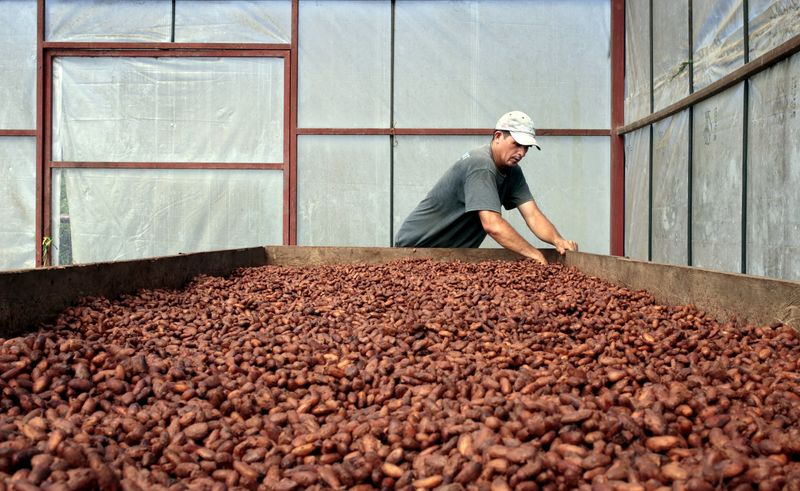By Chijioke Ohuocha
LAGOS, April 13 (Reuters) - Nigeria's mid-crop cocoa output for 2017/18 could rise by 15 percent from last season, helped by a mix of rainfall and sunshine in the main growing regions which has helped the trees, the head of the cocoa association said on Friday.
Drought cut last season's mid-crop harvest by 40 percent. The dry weather continued into the main crop of the new season.
Sayina Riman, president of the Cocoa Association of Nigeria (CAN), said the drought affected the trees, reducing output of between 300,000 tonnes and 320,000 tonnes projected at the beginning of the 2017/18 season.
Early rains in March and April has helped boost the mid-crop, which could see the season's output close at around 290,000 tonnes, Riman said, who farms on a 170 hectare cocoa plantation in Nigeria's second-biggest region of Cross Rivers.
Another farmer said he had experienced harmattan winds last year which dried up cocoa trees and that he thought the weather pattern would continue into the mid-crop season.
The cocoa season in Nigeria runs from October to September, with an October-to-February main crop and a smaller light or mid-crop that begins in April or May and runs through September.
"Despite the drought of last year which affected cocoa we believe we would be close to 290,000 tonnes for 2017/18 season," Riman told Reuters.
The International Cocoa Organization (ICCO), however, gives much lower estimates of Nigerian cocoa output. It forecast last season's production at 225,000 tonnes.
Riman did not give a reason for the discrepancy. Nigerian government production figures are also significantly higher than ICCO estimates.
Nigeria has recently emerged from recession and a currency crisis which caused a chronic dollar shortage, forcing exporters to under-invoice their goods in order to use the foreign exchange black market to get premium for their hard currency.
The action caused the West African country slip to the sixth producer of cocoa in the world at the peak of the crisis. Riman said Nigeria was getting back to number four grower as exporters now use the official currency markets.
Riman said Nigeria was working on improving its bean quality especially with renewed demand from Europe. However, bean count, a measure of the number of beans needed to produce 100 grams of cocoa, reached as high as 140 for the main crop.
